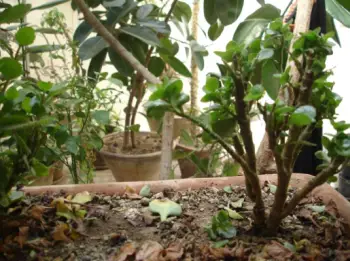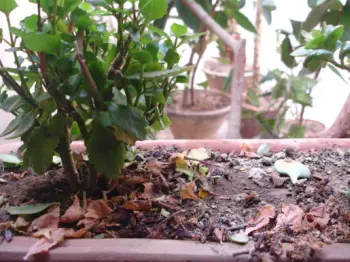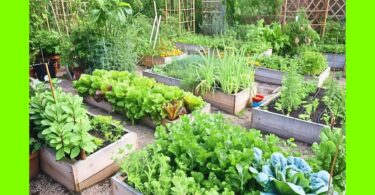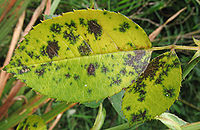Dear Mark,
My kale are taking a beating or rather an eating. Have sprayed with Sambucus 6c which helped, but not enough. So pleased this thread is being continued… Kaviraj must be pleased. He was a great pioneer.
Jean Doherty
M.M. : Dear Jean
Where are you in the world? What is eating your kale? Is it curly kale and how old is it?
—————————————————
Dear Mark,
Last year aphids ate our pepper plants so voraciously that little was left. We don’t believe in chemical answers, so I wonder if you could suggest some natural solution to this.
Thank you
Cynthia Wilensky
M.M. : Dear Cynthia – the same questions to you as Jean above. In general Kavi would say Coccinella Spetempunctata for aphids.
—————————————————
Dear Plant Doctor
The cabbage fly is a real problem for our broccoli and cabbage plants. Short of planting something else, is there anything we can do?
Thanks!
Steve Weiss
M.M. : Dear Steve.
Have you tried the netting? It has been the only thing to get us through the last few UK ‘summers’ but it has been very effective. As for an agrohomeopathic remedy have your tried the search function on Considera – ? This brings up Kavi’s suggestion of Salvia although he suggests you do not apply it to young plants.
Mark
—————————————————
Dear Dr. Kaviraj ;
Hello;
I have a question about kalancholeblossfeldiana plant; it has a problem in flowering and the leaves get yellow and become white in some parts. What is your suggestion about the best homeopathy remedy to solve the problem? Looking forward for your reply.
Best Regards
Somayeh Javadzadeh
M.M. Dear Somayeh
We have corresponded ‘off air’ about this, and now that I am receiving your enquiry to Kaviraj perhaps it would be OK to go over the answers we have shared there.
SJ:
“I have a question about kalancholeblossfeldiana plant; that has problem in flowering and leaves get yellow with the soil that become white in some parts.
What is your suggestion about the best homeopathic remedy; it’s doses and potency that will solve the problem ? of course I have repertoires the case in considera .org . looking forward for your reply in order to get best decision.
MM:
“Sorry to take so long to get back you.Can you let me know why the soil gets white. What is the whiteness? Are you growing other plants in the same soil and are they healthy? Do you get any creatures living off the yellow leaves. Do these leaves fall off or recover?”
SJ:
“ I have grown some cactuses in the same soil. They are healthy due to whiteness and I did not see any living creature on the yellow leaves but even green leaves fall off easily when they are touched.By the way, one of the problems is that they don’t blossom after changing their pots. What do you suggest ?
There are pictures of the plant that might be helpful.
And in addition of Cosidera.org what do you suggest for starting Agro homeopathy so scientifically and in the right way in order to expand this method for having best quality agricultural crops, especially herbal plants?”
MM:
“One of the big questions re your plants is whether the white is a fungus or a salt. The treatment would be at opposite ends of the spectrum depending on the answer to this. Do you think the whiteness is fungus or salt? If salt do you know where that has come from? What do you irrigate with? I’d guess that this is more likely than fungus given that cacti do well. It would also make sense for leaf fall. Repotting I don’t understand yet.
For the scientific investigation of agrohomeopathy ….a very interesting question. One of the aspects on which there is so little agreement is how homeopathy can work. There are different models from the clathrate structure of water (its ‘memory’) to more esoteric considerations of the role of water in organic activity beyond being a broad-based solvent. I tend to have worked on the latter more and there is a fitting geometrical approach, as well as an understanding of what a plant is that goes back to Goethe 200 years ago. The problem with this is that the mainstream scientific community is focussed on DNA almost to the exclusivity of everything else. The plant and all other organisms are seen as a plan – DNA – and the matter which fills that plan – nutrients. There is no place in there for homeopathy.
However, the scientific-statistical model is useful. The important thing here would be to keep very good notes of all the trials one does – either formal or casual – and to share them. In this way one will find occasionally dramatic successes but only as anecdote. However, as we compile these anecdotes from across the world we will get to the point where we are confident of which remedy will have an effect on certain diseases in certain climates and then we can do a rigorous investigation with carefully analysed data and controls.
Interestingly, this has been done once already and the preparation beat the neonicotinoid dealing with mealy bugs in cotton and was hugely statistically significant in comparison with a water control when the trial was run by independent cotton researchers.
–
What do you think we could do?”
SJ:
“I think that is the best way to prove the effects of homeopathy on Plants because when the results are seen, denying this method is difficult . As I have been chosen to work on palm in order to stop using toxicant by this method , I want to do my best .What should I do first? Gathering the symptoms?… I need your help if you have time and agree. By the way, as you have mentioned I think the whiteness in the soil is fungus and repotting means planting in a different place.”
MM:
“So, if there is a fungus in the soil, is there much fairly fresh organic matter – manure, compost – in the soil mix? Or do you think that the white fungus has fallen from the plant on to the soil? Do you know what this fungus is?
Yes, I agree that if we can show that homeopathy can do well on plants then we will have showed that this is a genuine healing technique. This is one of my main motivations too. Yes, a clear gathering of symptoms and then good record keeping and sharing our results is the way I can see that we can make progress.
Again, sorry Somayeh for taking so long to get back to you.”
SJ:
“I have not seen any fresh organic matter as in picture that has been sent; they are like soil but white also I Don’t think that white objects have fallen from the plant on the soil. I sift the soil. Maybe the white objects disappear, but still I have a problem with their flowering.”
MM:
“Do you have access to the biodynamic preparations? If so I would spray BD500 on the soil on an evening (ideally around 6pm) and then the next morning (ideally around 6am) spray spray some BD501 above the plants in a fine mist. I’d repeat that each week over 3 weeks.
I would imagine that will bring the plants back to flowering and it would be interesting to see what it does for the soil as well.”
SJ:
“would you please give me more information about biodynamic preparation or any reference .”
MM:
“500 and 501 are bio-dynamic preparations. You can get lots of information about them from the Considera site. www.considera.org/500 and www.considera.org/501 are in the same format as the agrohomeopathic remedies.”







Hello Mark
I’ve only used Homoeopathic tablets/pills as medication. Kavi suggested liquid forms in the garden.
Can I use the tablet/pills in lieu of liquids and if so what proportions would I use?
This info could be of use to others in my position.
Regards.
I have taken up this in the next e-zine but until then:
“Christiane Maute has used remedies on pillules and says this in her book “Homeopathy for plants”: for your garden: Crush 6-8 globules in 150 ml or water using a plastic or wooden spoon. This mixture will be divided into 3 parts and used to make 30l of “medicinal water” in all.” (The three parts are because 10 litres is enough to carry but you can add the 150 ml to the 30 litres in one go.)”
Thanks Mark for response about my kale which is being chewed. Not curly . In Australia.ACT.
There are white butterflies around which are I think the source of the problem. Best Wishes, Jean
Samb. Sambucus Nigra
Bom pro. Bombyx
Ment Mentha Viridis/ Piperita/Sativa spp.
BD508 508
BiP – C2 Biplantol contra x2
BD501 501
Sil. Silicea
Hel Helix Tosta
Sim – BT Bacillus Thuringiensis (BT)
Cimic. Cimicifuga Racemosa
All these come up when putting caterpillar into the materia medica . Please try one. I’d also suggest netting. Many of my friends here are delighted how our cabbages are now thriving when for years without nets we had little or no crop!
Mark
Help I can’t grow echinacea plants because my husband’s miserable pitbull keeps eating them! What to do, what to do!
I keep getting these little black bugs coming from my houseplant. My pesticide guy says they breed in the soil. What can I do about them?
Dear Janice,
Please send us a photo of the bugs. ALso, please tell us what kind of plant. Thank you
Could you please help me? The neighbour of mine wanted to get rid of my trees (Betula pendula) on our mutual land-border but on my side. These trees grow as 3 together (2 pairs) and then 1 alone. In total, 7 trees. From these 7 trees, only 2 are Ok, the rest got dry and it is now without leaves. I do not know when he did it but I noticed the red marks (smells on chemistry) on the typically white “skin”. I assume it could be an oil from car/ petrol or similar. Is there any way that I could help these trees with homeopathy? Please, help me. Thank you very much, I appreciate it.